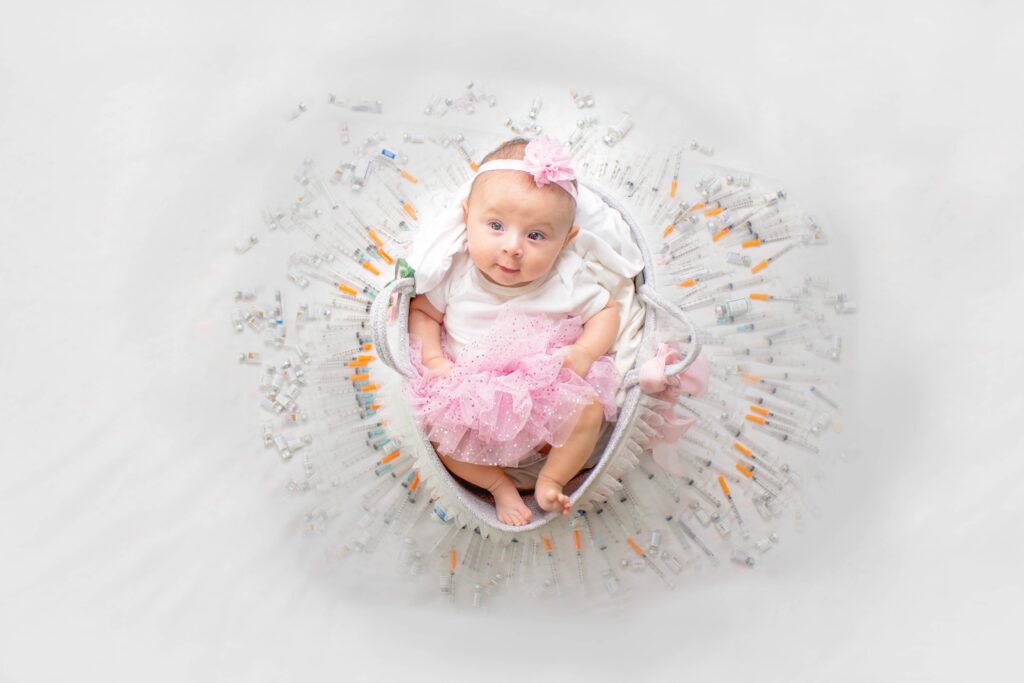
Selecting Fabrics for Newborns
The Importance of Fabric Selection
Choosing the right fabrics for your newborn to wear is a crucial task. Your baby’s skin is soft and delicate, so the right clothing material adds to their comfort and overall health.
Cotton: The Preferred Choice
Most parents and caregivers prefer cotton for newborn clothes, and here’s why. Cotton is soft, breathable, and gentle on a baby’s skin. Moreover, it absorbs moisture well, so it’s fantastic for hot weather or babies who sweat a lot. Always choose organic cotton, free from harmful chemicals or dyes, for newborns. Organic cotton not only protects your baby’s skin but also helps preserve the environment.
Bamboo: The Eco-friendly Alternative
In recent years, bamboo fabric is gaining popularity as a sustainable choice. It’s soft, hypoallergenic, and environmentally friendly. Bamboo fabric also regulates temperature well, keeping babies comfortable in any weather, hot or cold. So, if you’re looking for an eco-friendly option, bamboo can be your go-to fabric.
Fleece: For Cooler Temperatures
When it comes to cold weather, fleece is an excellent option. This synthetic fabric is warm and lightweight. Additionally, it dries fast. But remember, it’s not as breathable as cotton or bamboo, so it may not be suitable for all climates.
Muslin: The Lightweight Choice
Another great option is Muslin. This finely-woven cotton fabric is perfect for newborns, especially in warm weather. Its lightness and breathability make it an ideal choice for swaddling during the summer months.
Avoid Synthetic Fabrics
You might want to avoid fabrics like polyester. These synthetic materials might look wrinkle-free and durable, but they can irritate the skin or cause overheating. Instead, stick to natural, breathable options.
Look for Specific Fabric Features
When shopping for baby clothes, look for tag-free clothing or labels printed on the fabric. These features help avoid skin irritation. Also, opt for clothes with wide necks or snaps, making dressing much more comfortable.
Consider Fit and Size
Newborns grow quickly. Consequently, it’s wise to buy slightly bigger clothes. However, be careful not to choose too loose outfits, as baggy clothing can pose a safety risk. The right fit ensures comfort and safety.
Dress in Layers
Layering is a smart way to manage body temperature. Start with a lightweight cotton base, and add layers depending on the weather. This simple trick can make a big difference in your baby’s comfort.
Wash New Clothes
It’s essential to wash new clothes before your baby wears them. This simple action removes any substances that might irritate their skin. Always use a mild, baby-friendly detergent, and don’t hesitate to double-rinse if needed.
Choose Safe Sleepwear
Comfort and safety should be your top priority when selecting sleepwear. Avoid any clothing with strings or loose buttons. Instead, sleep sacks or wearable blankets are safe and cosy choices.
Recommend Quality Clothing
Here are some carefully selected examples of quality baby clothes:
Burt’s Bees Baby Onesies: Made of 100% organic cotton, these onesies are gentle and come in various adorable designs.
Carter’s Fleece Sleep Sack: Ideal for cool nights, ensuring your baby stays warm and cosy.
Prioritize Comfort Over Style
While it’s tempting to dress your newborn in fashionable outfits, comfort must always come first. Avoid clothes with any rough embellishments. Soft, smooth fabrics with minimal designs are often the best choice.
Consider Preemies’ Needs
If you have a preemie, you’ll need to make special considerations. Clothes should be soft, easy to put on, and able to accommodate any medical equipment. Many brands offer a special line of preemie clothes specifically designed to meet these needs.
Understand Labels
It’s vital to learn how to read and understand clothing labels. Look for tags that specify that the fabric is flame-resistant or snug-fitting, especially for sleepwear. On the other hand, avoid clothes labelled as flame-retardant, as they contain chemicals that can be harmful to babies.
Balance Cost and Quality
While cheaper clothes might be tempting, they may not always be the best for your baby’s skin. Higher-quality clothes often come from better materials and withstand frequent washing. Therefore, investing in quality might be more economical in the long run.
Build a Practical Wardrobe
Investing in basics like onesies, sleepwear, and swaddles can make everyday dressing a breeze. By having a variety of options, you ensure you’re ready for different weather conditions and occasions.
Choosing the Right Fabric for Your Baby’s Clothes – Rocco & The Fox
Consider Seasonal Needs
Your clothing choices will depend on the season. For summer, lighter fabrics are ideal, while in winter, warmer materials like fleece will be more suitable.
Consider Allergies
If your baby has allergies or skin conditions like eczema, the right fabric choice becomes even more critical. Hypoallergenic materials like cotton and bamboo can prevent irritation and flare-ups.
Dress Appropriately for Outings
Remember to dress your baby appropriately when going out. In winter, hats and mittens are essential, while a sun hat in summer can protect your baby from harmful rays.
Consider Buying Second Hand
Buying second-hand baby clothes is a cost-effective and environmentally friendly option. Just ensure you clean them thoroughly before use.
Ultimately, choosing the best clothing for your newborn means focusing on comfort, safety, and happiness. With a careful approach to fabric selection, you can ensure your little one feels good in what they wear, allowing them to easily explore their new world. Remember to observe how your baby reacts to different types of clothing, guiding you in making future choices to suit their individual needs.
To know more about Choosing the Best Baby Wipes for Newborns click here.
